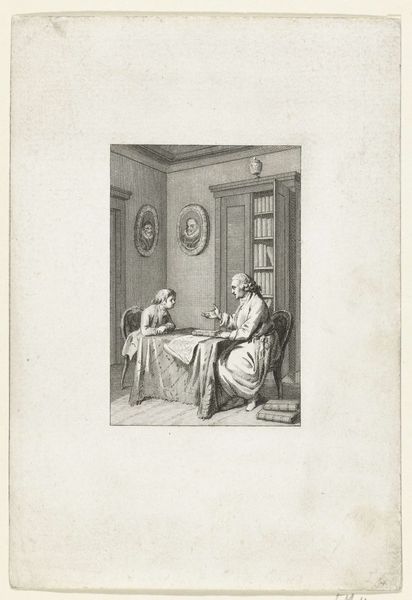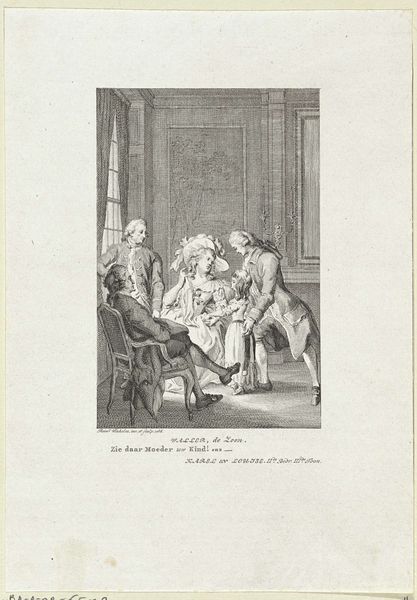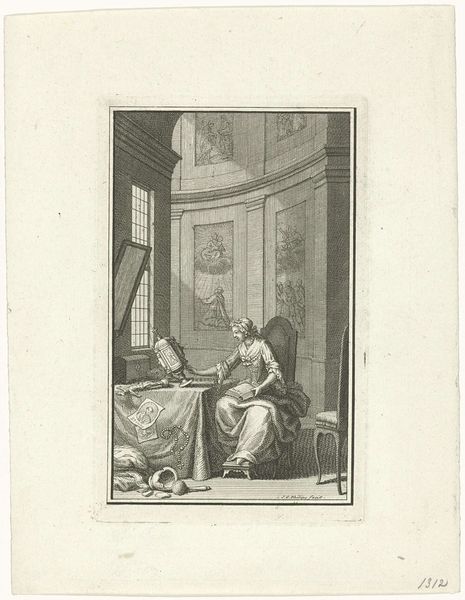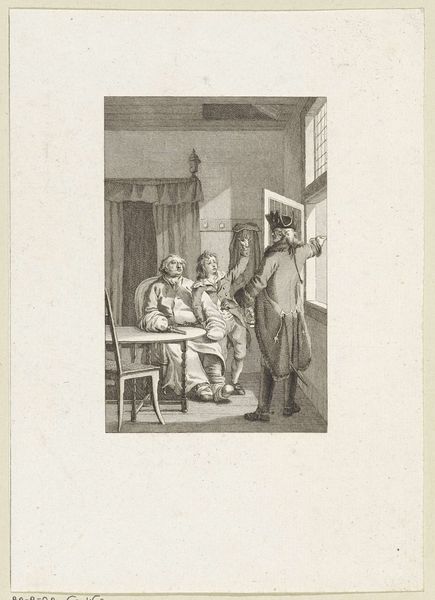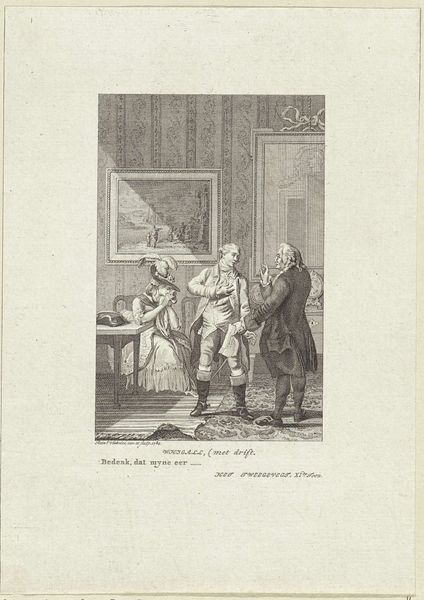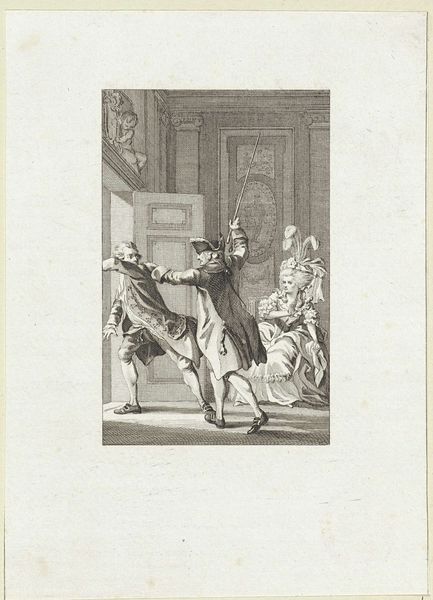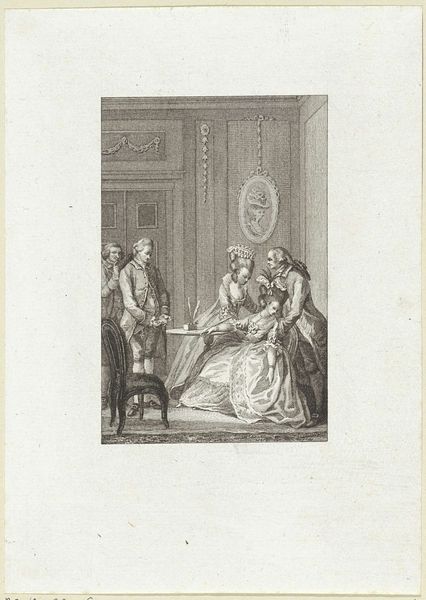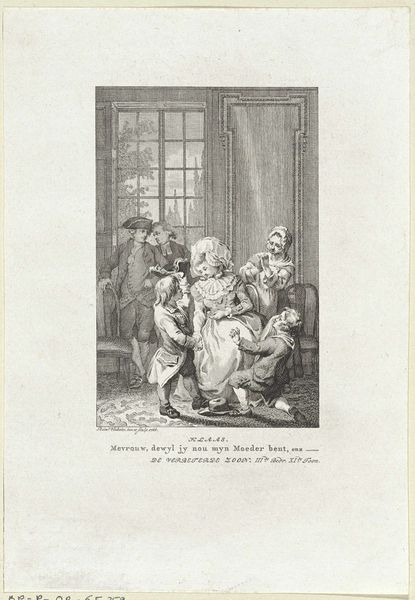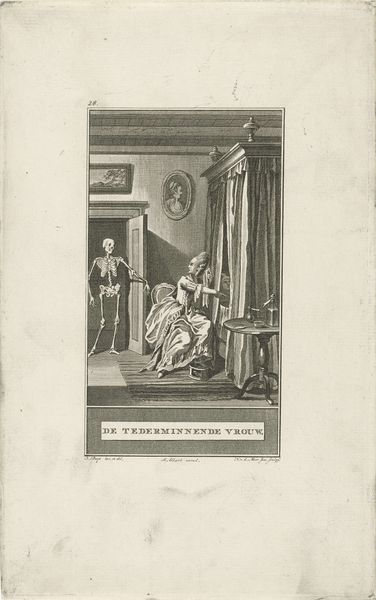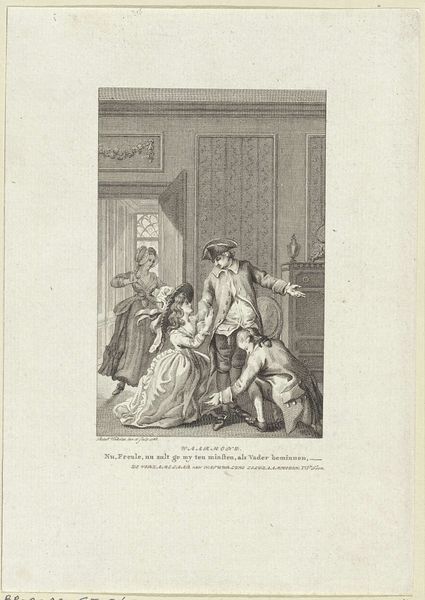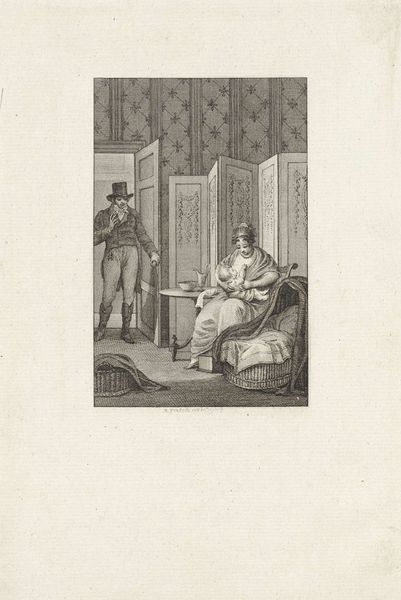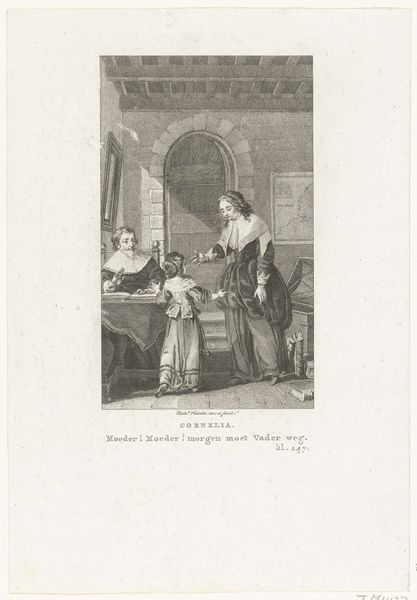
Dimensions: height 232 mm, width 152 mm
Copyright: Rijks Museum: Open Domain
Izaak Jansz. de Wit created this print, Vaderlijk afscheid, in 1781, using etching and engraving techniques. These processes involve cutting lines into a metal plate, applying ink, and then transferring the image to paper. The fine lines and details, especially in the clothing, were achieved by skilled labor and craftsmanship. The etcher and engraver needed a strong understanding of materials, the properties of acids, and the manipulation of metal to create a visually compelling image. The quality of the paper would also influence the final product, affecting the clarity and depth of the print. These techniques were widely used in the 18th century for mass production of images, making art more accessible and contributing to the spread of ideas, but are also rooted in traditions of skilled artisanship. Consider how the print’s production and availability reflect the changing social and economic landscape of the time, and the cultural significance of distributing visual narratives widely. Appreciating both the artistic skill and the socio-economic context helps us understand the full meaning of the artwork.
Comments
No comments
Be the first to comment and join the conversation on the ultimate creative platform.
